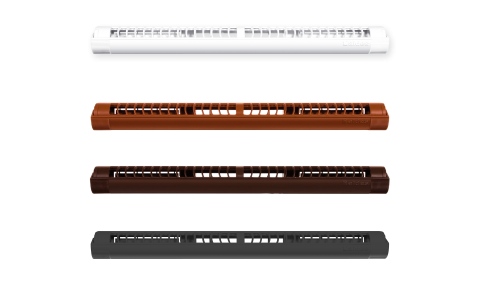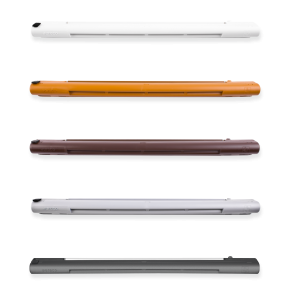

Air inlet vents









 comfortable use
comfortable use
Air flow
to 30m3/h
Sound absorption
to 38 db(A)
Types
pressure, manual, humidity sensor



Air inlet vents are devices, which ensure proper air circulation and retain an appropriate level of humidity in a room. Even when windows are tightly closed, fresh air gets into the room ensuring effective ventilation.
A standard set includes z:
- an internal part (air inlet vent) controlling the amount of air supplied
- an external part (hood) protecting against rain and insects.
Advantages of air inlet vents:
- elimination of humidity in rooms and protection against mould and fungi.
- prevention of water vapours from accumulating on the pane surface.
- improvement of air flow and supply of fresh air.
humidity sensor controlled air inlet vents – automatically controlled. An air flow stream depends on contents of water vapours (relative humidity) in a room, i.e. pollution of air resulting from activities such as laundering, cooking, drying etc. A control sensor is a polyamide tape, which, under influence of changes in relative humidity in the air, changes its length, which makes a damper open to a greater or lesser extent and let greater or smaller stream of ait into the room.
- Air inlet vents operate within the range from 35 to 70% of relative humidity. If humidity in a room is lower or equal to 35%, the air inlet vent is closed and minimum air stream is let in the room. With increase of humidity, the air inlet vent opens and, with humidity value of 75% or more, it achieves its maximum efficiency.
- The structure of air inlet vents prevents external air from getting into direct contact with the sensor. Owing to this, the sensor analyses conditions in the room and not outdoors.
- It is possible to interlock a position, at which minimum fixed air supply level is achieved.
- Depending on the method of assembly, the air supply direction changes (vertically up or diagonally).
- An air inlet vent operates without manual control and does not need any power.
pressure air inlet vents – self-controlling air inlet vents. The volume of air supplied depends on the difference of pressure outside and inside a room. This is true up to the level of the difference of pressures, for which the air inlet vent achieves its maximum value. With further increase, the wings will bend to restrict the amount of air supplied. Such a situation may be caused by, e.g. wind blows. It is possible to close the cover and limit the flow of air to minimum.
manually controlled air inlet vents – the volume of air supplied depends on positon of the cover. The degree of opening of the air inlet vent may be controlled by a user, which decides about the volume of air supplied changing positon of the cover manually. Manually controlled air inlet vents are most often used in places, where provisions restrict use of humidity sensor controlled and pressure air inlet vents, e.g. in case of supplying air to houses with gas devices such as stoves, water heaters and heaters.







